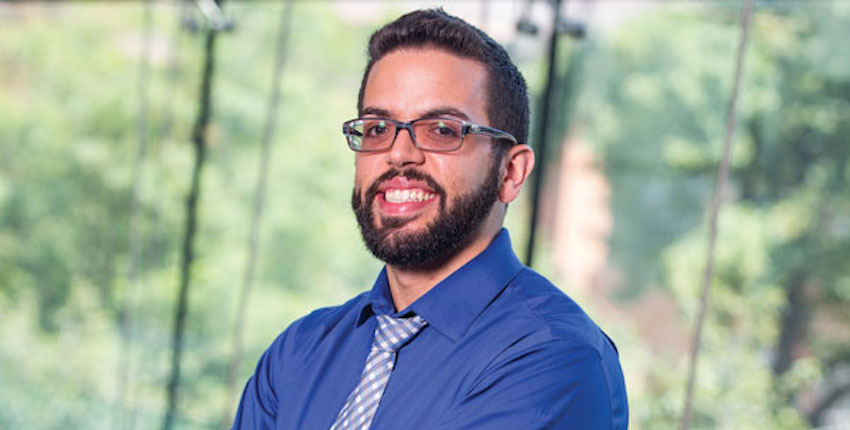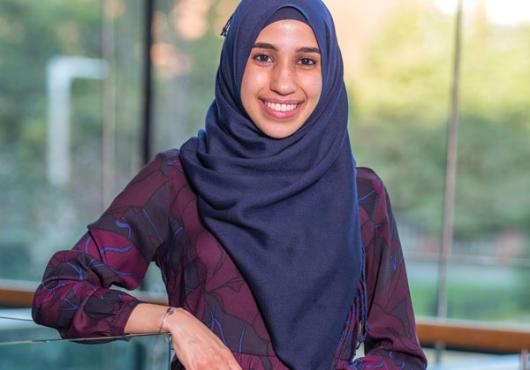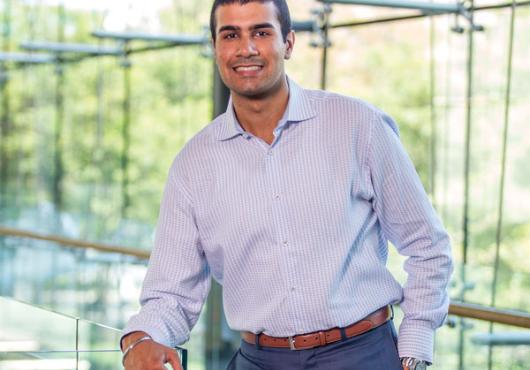
This essay was written for the 2017-2018 HMS Dean’s Report in answer to the question “What is the promise of medicine to me?”
My vision of medicine has continuously evolved throughout my training, but there is one thing that has endured: medicine promises people hope.
Before I started medical school, my grandmother passed away from Alzheimer’s disease, and my family and I felt the comforting hand of medicine during this time of hardship. Although I initially thought medicine had failed, the many efforts from skillful providers to alleviate her declining condition inspired me and my family to hope that one day, medicine in the future could achieve what seemed impossible at the time. Once I started medical school, my exposure to countless patient experiences and translational medicine made it even clearer that medicine promises people hope. Hope rooted in the discoveries of the past and felt in the therapies of the present. Hope that is inspiring the future.
Medicine promises people hope. Hope rooted in the discoveries of the past and felt in the therapies of the present. Hope that is inspiring the future.
Medicine is riddled with a history of countless breakthroughs that today have become standard of care in many clinical settings. With the first successful vaccine for smallpox by Edward Jenner in 1796 to the most recent trials of an effective Ebola vaccine, I have been able to tell patients in my primary care clinic that the vaccines they receive will help prevent deadly infections they probably haven’t even heard of because vaccines have made those infections so rare today (or even extinct!)
I have had the experience of comforting many patients and family members undergoing surgery, ensuring that they would not feel any pain or remember anything, thanks to one of the earliest successes of surgical anesthesia in 1846 by William Thomas Green Morton in the famous Ether Dome at Massachusetts General Hospital.
In addition, one of my favorite historical moments is the serendipitous discovery of the first antibiotic penicillin by Alexander Fleming in 1928. If he had not noticed that bacteria did not grow around the fungus contaminating his culture plate, I might not have been able to tell many of my patients today that with a course of antibiotics their illness would disappear. Building upon this history of achievements, medicine has given me solid ground to be able to treat patients with diseases that would have been fatal centuries ago.
One of the most wonderful aspects of practicing medicine is having the privilege to tell patients that there is hope for a treatment—even a cure—for their illness. One particular experience I had was interviewing a patient, a mother of three children, who had metastatic diffuse large B-cell lymphoma that was debilitating her due to invasion of her nervous system.
She had undergone multiple rounds of chemotherapy and radiation therapy but the cancer kept relapsing, and she and her family were starting to lose hope. They felt that medicine was failing them. During the time I saw her, however, we began a conversation about enrolling her in a clinical trial that employed that use of CAR T cells. She and her family were awed to hear that despite multiple rounds of failed chemoradiotherapy, this new treatment had a good chance of curing her cancer. Seeing her family rejoice was a magical experience that reaffirmed my decision to pursue a career in medicine, and it also challenged me to continually push the boundaries of modern medicine so that I can make “miracles” like this possible for future families.
Experiences like this have also fueled my passion for translational research, which aims to bring lab bench discoveries to the bedside of patients seeking innovative medical care. The area of research I focus on is the immune system, an intricately complex defense system that covers our entire body from head to toe. I am helping to develop a mouse model that can bear a human immune system, which will allow modeling of human infections and testing of vaccines and biologic pharmaceuticals that may be used to treat cancers and autoimmune diseases.
It is clear that our immune system has great potential. Through the scientific and medical community mastering its potential, I am confident that we will be able to understand and treat a wide array of human disorders. That is why, with every experiment I do in the lab, I have my own personal hope that one day, the findings I make can contribute to the development of a therapy that can help treat a disease and alleviate the suffering of those afflicted by it.
As such, whether someone is born with an inherited disease, recovering from an accident, struggling with mental illness or battling with the normal process of aging, medicine promises to alleviate suffering and give people hope. This hope I have encountered goes beyond the factual knowledge of therapies I have gained and touches people’s lives in a very personal way, as it has touched mine. As Hippocrates said, medicine will continue to “cure sometimes, treat often and comfort always” with the promise that even for fatal, incurable diseases, medicine will provide hope for more effective treatment in the future.





